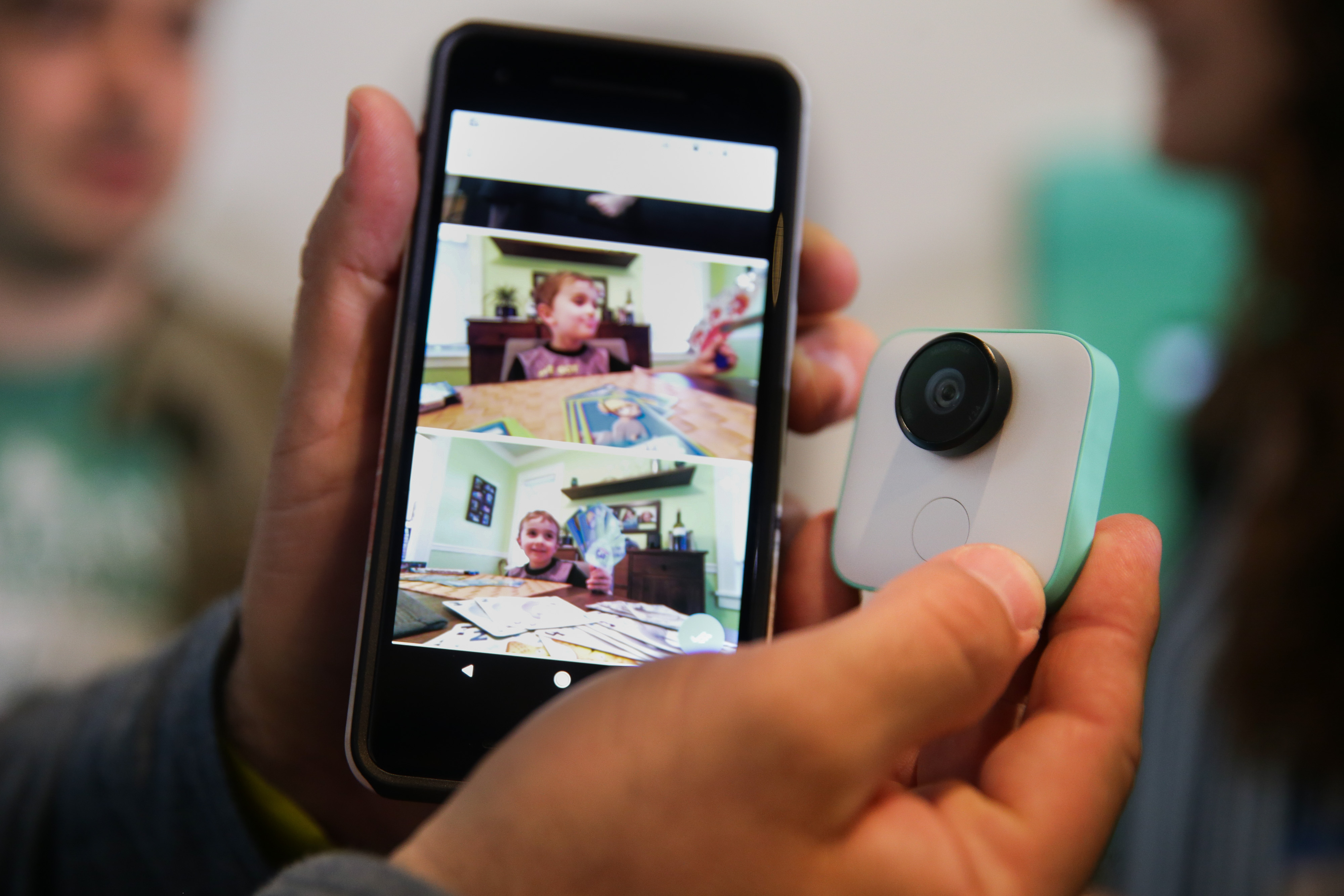The disturbing acceptance of Google's new 'smart' camera
The Google Clips is creepy and dangerous — but tech journalists only want to talk about the specs


In the reviews that rolled out recently for Google's new Clips smart camera, there were the rote things that you'd expect in all tech reviews: what was good, what was bad, and, inevitably, whether or not you should buy it. There was, however, a key idea conspicuously absent: whether or not the product should exist at all.
The pitch for the Google Clips is it's a camera that sits off to the side in a room and automatically captures the kinds of candid shots that one never really plans for — the most common examples cited being some random happening involving one's kids or pets. Instead of mere serendipity, however, the camera uses artificial intelligence and machine learning to try and guess when to best take a shot.
Reviews, perhaps unsurprisingly, haven't been great. The technology to take pictures in a smart way with satisfying results simply doesn't exist yet, largely because determining what makes a good shot is still a profoundly human, subjective thing. But perhaps a product with such obvious flaws is cause for concern for reasons more significant than the release of yet another disappointing gadget. Instead, it appears that in rarely questioning whether a piece of tech should have been released at all, we are unwittingly become guinea pigs for tech, and inadvertent cheerleaders for things that, in the aggregate, end up making things worse.
The Week
Escape your echo chamber. Get the facts behind the news, plus analysis from multiple perspectives.

Sign up for The Week's Free Newsletters
From our morning news briefing to a weekly Good News Newsletter, get the best of The Week delivered directly to your inbox.
From our morning news briefing to a weekly Good News Newsletter, get the best of The Week delivered directly to your inbox.
After all, despite the middling reviews, the Clips is something more like a proof of concept, a preliminary first step towards more and more sophisticated versions of these kinds of products. The failure of the device to be able to do what it says on the box — while also costing $250 — suggests that Google knows this is a limited product with limited appeal.
What's the point then? In part, to position Google as an innovative, even family-friend company. But it's also to test out the concept, gather data, and help perfect the idea of a "smart camera" for broader applications. It's thus worth questioning what gets carried along in the cutesy design and marketing of a product like Clips. Cameras powered by artificial intelligence will inevitably be used to superpower surveillance. In an age in which facial recognition technology is already being used to apprehend criminals, a smarter camera from one of the world's largest companies is something impossible to see as merely fun.
All the same, there's also the plainer, more simple truth that the concept underlying the Google Clips camera is itself questionable. Why is capturing more and more candid images good? It all proceeds on the assumption that the more things we record the better. But that is far from an agreed-upon idea. The presence of a camera itself produces an awareness of being watched. It's a common, and very often harmless fact of the smartphone era. But the idea of adding smart cameras, smart speakers, and more to our homes simply increases the sense that all moments are there for recording, and we've yet to grapple with not just what it means, but whether or not it's desirable at all.
Not helping matters is that the tech press is forever breathless about new tech, obediently accepting its makers' framing. The reviewer for the Clips camera for popular tech site The Verge, for example, decided to exclude his worries about the purpose of the Clips camera from his review, instead taking to Twitter to air his skepticism. The lack of critique about the release of Clips was mimicked by most other sites, too. It seems like a dereliction of journalistic duty.
A free daily email with the biggest news stories of the day – and the best features from TheWeek.com
There's no such thing as technology too silly or unnecessary for real criticism. Even tech used for seemingly toy-like purposes can go on to become quite important. Case in point: Graphics technology used mainly to give gamers sharper visuals is now driving the rise of blockchain technologies which, despite the Bitcoin bubble, may prove to be profoundly important in the future. The history of technology is littered with such examples, and one must be careful not to dismiss what can seem silly now as it may end up being significant in the future.
Indeed the world is overrun with new technologies carrying unintended negative effects. There are the mental health consequences of using Twitter or Facebook. AirBnB may be pushing up rents, while Lyft and Uber appear to be making congestion worse, not better. These are just the tip of the iceberg, as the entire ground under our feet shifts in the digital revolution.
It's not that these technologies are in and of themselves bad. Rather, it's that they're producing negative effects that we didn't anticipate. So as each new piece of digital wizardry comes along, the least we could do is truly examine it.
Navneet Alang is a technology and culture writer based out of Toronto. His work has appeared in The Atlantic, New Republic, Globe and Mail, and Hazlitt.
-
 A luxury walking tour in Western Australia
A luxury walking tour in Western AustraliaThe Week Recommends Walk through an ‘ancient forest’ and listen to the ‘gentle hushing’ of the upper canopy
-
 What Nick Fuentes and the Groypers want
What Nick Fuentes and the Groypers wantThe Explainer White supremacism has a new face in the US: a clean-cut 27-year-old with a vast social media following
-
 5 highly amusing cartoons about rising health insurance premiums
5 highly amusing cartoons about rising health insurance premiumsCartoon Artists take on the ACA, Christmas road hazards, and more
